A Day in Training
I know that everyone on the team agrees—spending time learning about the collection is a privilege, an honor, and a lot of fun. Training started with a focus on the Museum’s Egyptian, Classical, and Ancient Near Eastern Art. Our introduction to the collection first included getting lost in the silent galleries on a Monday morning when the Museum is closed to the public. We approached the galleries independently, with the intention of seeing the spaces, and experiencing the artworks as if it were the first time we were seeing the collection. I find that this can be a very helpful exercise when looking at art—as much as it is possible, you erase your prior knowledge, and deliberately look with fresh eyes. Looking with this heightened awareness also begs that you ask more questions, which we brought to our afternoon tour with Curator of Egyptian Art Edward Bleiberg.
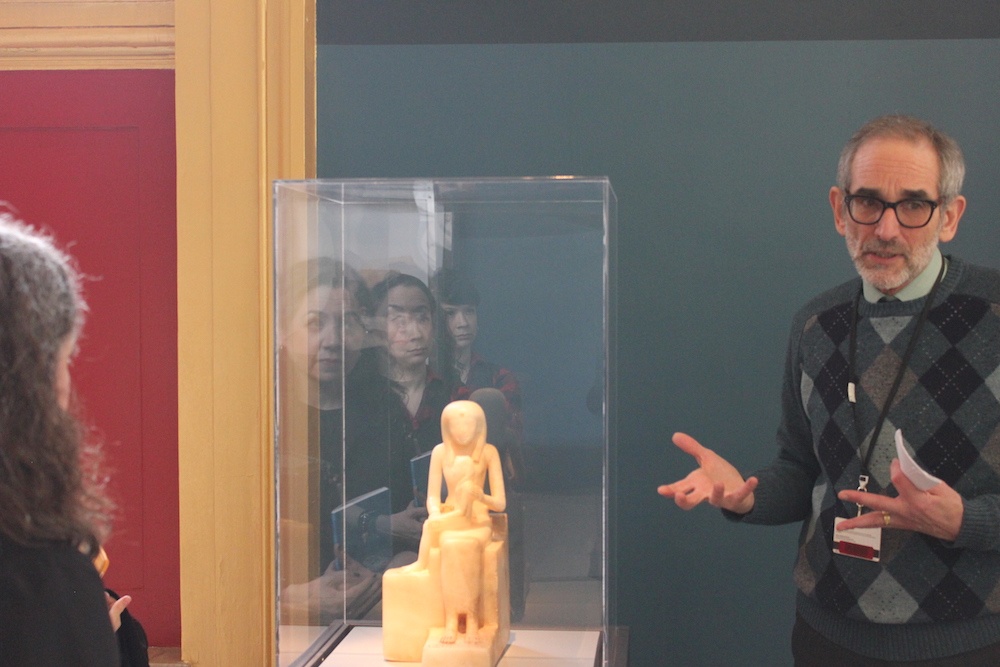
Ed Bleiberg, curator of Egyptian Art, describing one of our signature objects, the Statuette of Queen Ankhnes-meyre II and her Son, Pepy II.
The tour was amazing. We had the opportunity to look closely with Ed at ten key objects on display. One of these objects was, “Statuette of Queen Ankhnes-meyre II and her Son, Pepy II.” He described the significance of the iconography and its influence in the history of art and later religious iconography. The six year-old King is seated on his mother’s lap, an iconography we can see in later works depicting the Virgin and Christ child in Christian objects. By looking closely with Ed, and having the opportunity to ask questions, we left with insight into the symbolic significance of the statue, its material and where it may have come from, an understanding of kings in ancient Egypt, and stylistic choices in ancient Egyptian art—for example, we asked about the elongated toes and fingers. The answer provided us with the skills to look more closely at other objects in the collection—great attention to detail was often employed when rendering hands and toes in Egyptian art, in some works you can even see the details of the figure’s cuticles; this same attention to detail was not placed, for example on the figure’s facial features. While this may seem like a minor detail, it really does change with way that you look at other objects on your own.
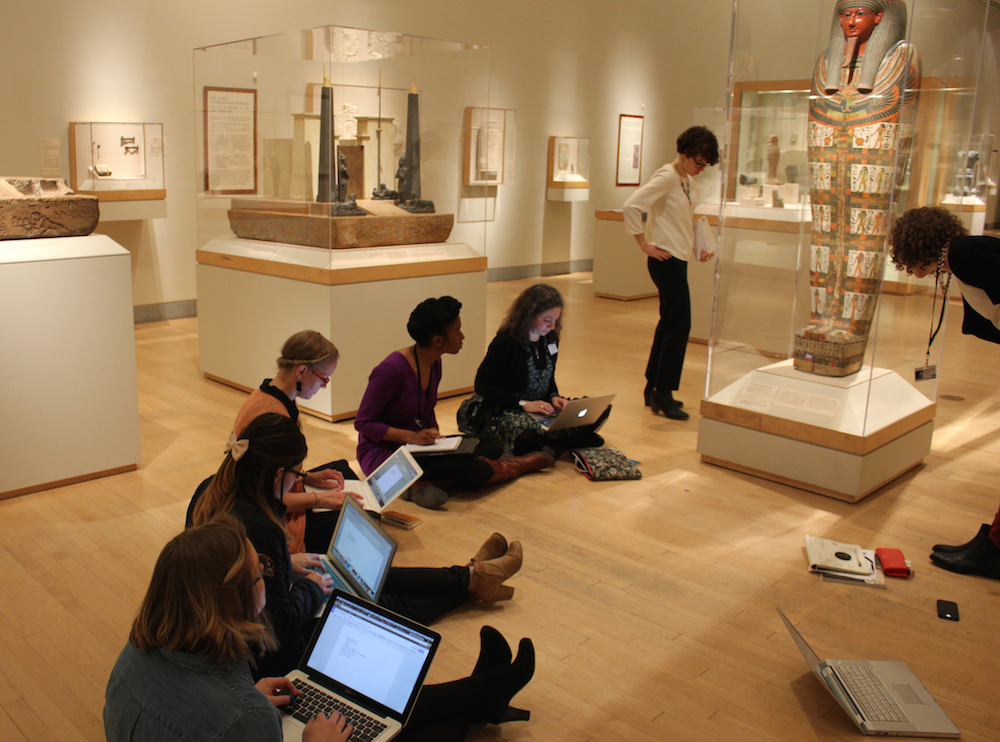
The Audience Engagement team working in the Egyptian galleries to write wiki content.
Following our talk with Ed, each team member chose one of the ten objects that Ed shared with us to research more in depth, and write object wikis. The wikis, as Marina mentioned in an earlier post, will provide the team with necessary information when they are engaging with the public through ASK. Over the course of training, and during ASK’s soft launch, the team will continue to write wikis for objects throughout the collection. To be sure that the wikis are resources that will provide the information that we need when manning the dashboard we also practiced using the wikis in an ASK practice session.
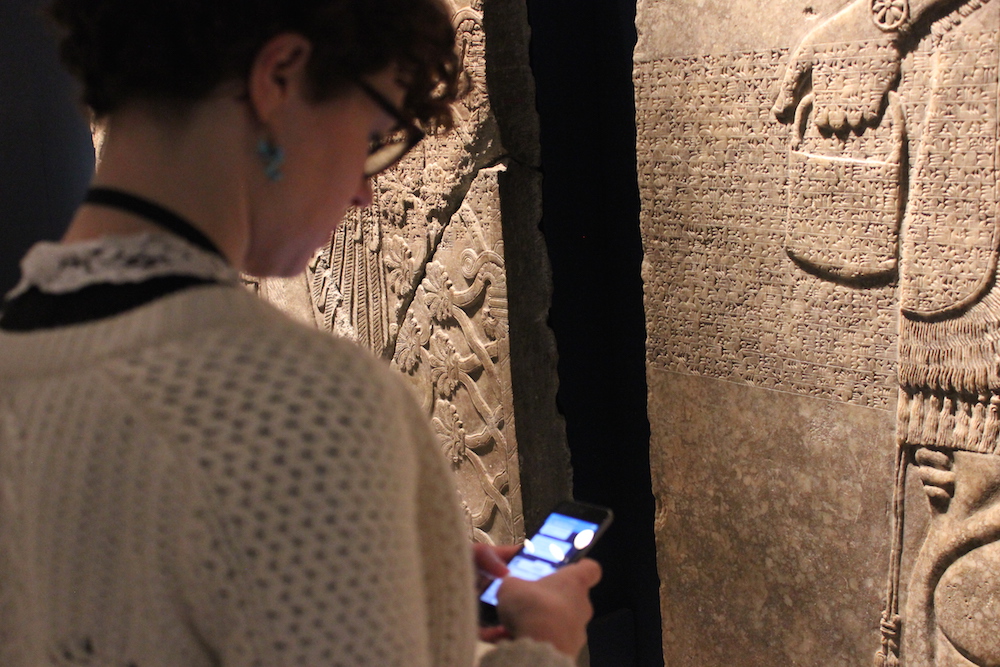
Alisa Besher using the app to ask questions during a team training session.
Practicing with ASK with the team in the galleries for the first time, did feel a lot like playing, in the best possible way. The feeling of excitement, nerves, fun, and fear that I had when I played capture-the-flag, and ghost-in-the-graveyard when I was a kid, were the same feeling that I and the team felt when we tried had our first ASK practice session. Two people from the team manned the dashboard and answered questions about the objects for which they prepared wikis, and the rest of the team went through the galleries and asked about those and related objects.
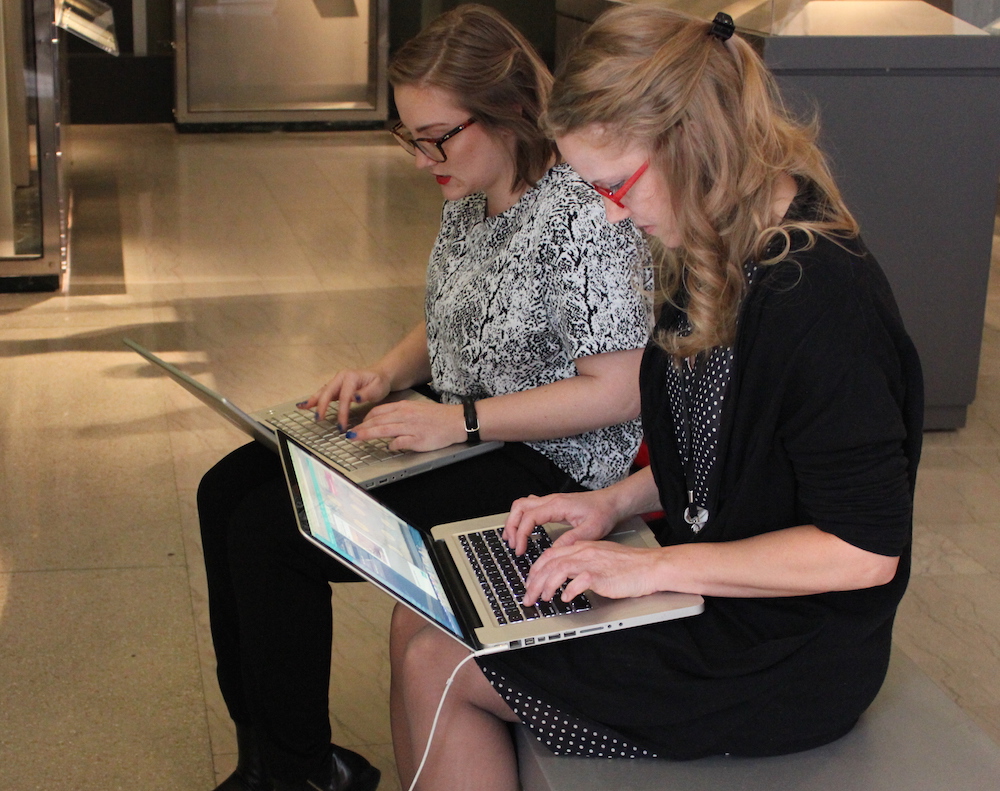
Megan Mastrobattista (left) and Katie Apsey (right) taking the controls of the dashboard during audience engagement team training sessions.
As was the case in a real testing environment, when manning the dashboard we felt the pressure of responding instantly and comprehensively, in an engaging and friendly way. It gave us a sense of the type of pressure that we’ll be under when ASK is live, but, the experience also gave us a glimpse of how much fun it will be. Because the team was being posed with inquiries about objects that they had just studied, they had information and ways in which to provide immediate responses, and different ways to engage those asking about the objects. Those answering questions found it exciting to have to think—at lightning speed—about the best way to share information; and those asking the questions were excited to get responses and gain new understanding.
This isn’t to say that everything was perfect. Each of us on the ASK team feel a deep sense of responsibility to the objects, the curators, and scholarship around the collections. There were plenty of inquiries that we didn’t have responses to, and even those that we did, in the back of our heads was the nagging thought voiced during the session, “Everything I write makes me nervous, there is no room to give wrong information, everything must be absolutely correct.” Fortunately, we are only into week one of training. Over the next two months the team will be working together with each other, and colleagues across the Museum to learn and study. Including asking all the questions we have to be sure that we get it right.
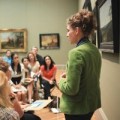
Monica Marino is the former Audience Engagement Lead and current School Programs Manager. She is a museum educator with over ten years of experience teaching people of all ages in museums, and training future museum professionals. Over the last ten years Monica has worked in Education here at the Brooklyn Museum, and The Metropolitan Museum of Art. She loves being in discussion with others in front of works of art, and is grateful for the many conversations that have taught her so much about art, and the world.


Start the conversation